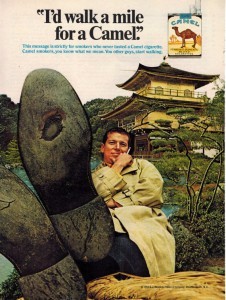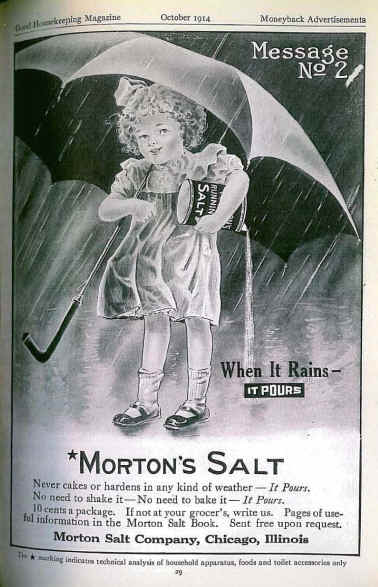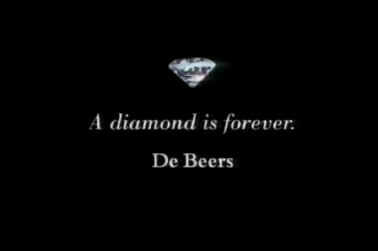|
NW Ayer & Son
The Oldest Advertising Company in the
Nation
 Nothing
spreads a message like a catchy, clever slogan. But inventing that
memorable slogan when planning a business is one of the most difficult
tasks an entrepreneur faces. Just watch the TV show "Shark
Tank" a couple times to see how many ways there are to fail. One
or two entrepreneurs are just not enough brain power to think of all
the requirements. Nothing
spreads a message like a catchy, clever slogan. But inventing that
memorable slogan when planning a business is one of the most difficult
tasks an entrepreneur faces. Just watch the TV show "Shark
Tank" a couple times to see how many ways there are to fail. One
or two entrepreneurs are just not enough brain power to think of all
the requirements.
The advertising agency evolved precisely for this
reason - to assist businesses in this specialized area. Around 1840 in
Philadelphia, Volney B. Palmer set up the first ad agency in the
United States. He actually just brokered space in various newspapers,
buying at a discounted rate and reselling to advertisers to make a
profit. The company wanting the advertisement prepared the layout and
artwork themselves.
As industrialization expanded the supply of
manufactured products to a larger market, advertising increased,
progressing into mass marketing to influence consumer behavior on a
large scale. Advertising also was used as a vehicle for cultural
assimilation, encouraging a plethora of immigrants to trade their
cultural habits and tastes for the American lifestyle.
In 1869 Francis Ayer founded his ad company also in
Philadelphia, naming it after his father, NW Ayer, who loaned him the
money for startup. By 1877 NW Ayer had become profitable enough to
purchase the Volney Palmer Agency. NW Ayer & Son ad agency began
creating and executing complete advertising campaigns for its
customers, and in 1892 put artists and writers together into creative
teams to develop comprehensive proposals for its clients.
 At
the turn of the 20th century Ayer recognized the insight that women
could contribute to the creative process. After all, they made a
majority of the purchases for their households. He began filling many
of the positions in his company with women. At
the turn of the 20th century Ayer recognized the insight that women
could contribute to the creative process. After all, they made a
majority of the purchases for their households. He began filling many
of the positions in his company with women.
The 1920s was a time of unparalleled collaboration
between business and government. Under Secretary of Commerce, Herbert
Hoover, the American government actually promoted advertising.
Delivering an address to the Associated Advertising Clubs of the World
in 1925, Hoover said, "Advertising is a vital force in our
national life." In 1929, the head of the US Bureau of Foreign and
Domestic Commerce, Julius Klein, felt that "Advertising is the
key to world prosperity."
In 1938 De Beers recruited the New York based NW
Ayer & Son to improve the image of diamonds in the United States.
The price of diamonds was falling around the world, and the personnel
at Ayer set out to persuade young men that only diamonds were
synonymous with love, and the measure of a man's love was directly
proportional to the size and quality of the diamond he purchased.
Through an intricate and complex program of ads Ayer used movie idols
and societal figures, the epitome of romance to mass audiences, to
reinforce the link between diamonds and romance. Fashion designers
talked on radio about the "trend toward diamonds." Ayer's
strategy plan even outlined a series of lectures at high schools about
the diamond engagement ring, reaching thousands of malleable minds.
 In
1948 Ayer created its most long-lasting slogan. It was De Beers'
"A diamond is forever." These four iconic words have
appeared in every single De Beers advertisement since 1948. According
to an article in The New York Times, "The woman behind the
signature line, Mary Frances Gerety, who wrote all of De Beers' ads
from 1943 to 1968 came up with the slogan right before bed one
night." In the morning when she reviewed what she had scribbled
down the night before, she thought it was "just OK," and
after presenting it at her morning meeting, no one was particularly
enthusiastic about the slogan. In
1948 Ayer created its most long-lasting slogan. It was De Beers'
"A diamond is forever." These four iconic words have
appeared in every single De Beers advertisement since 1948. According
to an article in The New York Times, "The woman behind the
signature line, Mary Frances Gerety, who wrote all of De Beers' ads
from 1943 to 1968 came up with the slogan right before bed one
night." In the morning when she reviewed what she had scribbled
down the night before, she thought it was "just OK," and
after presenting it at her morning meeting, no one was particularly
enthusiastic about the slogan.
Even so, the company decided to use that line, and
it contributed greatly to De Beers' advertising success. Even today,
the URL www.adiamondisforever.com redirects to De Beers' website. In
addition in 1999 AdAge, the principal trade publication of the
advertising industry, named the phrase the "#1 slogan of the
century."
N.W. Ayer & Son created many memorable slogans
over the years. In 1912 "When it rains, it pours." for
Morton Salt; in 1921 "I'd walk a mile for a Camel." for R.J.
Reynolds; in 1979 "Reach out and touch someone" for
AT&T; in 1981 "Be All You Can Be." for the US Army. The
latter of these was credited with completely remaking the Army.
In the late 1960s challenges to Ayer came from
small ad companies that began creating ads appealing to targeted
groups of consumers. The smaller agencies were nimble and could move
more quickly than Ayer's agency. Ayer dropped to the 10th largest
agency in the nation, and by 1982 it had declined to 14th.
 Then
in 1986 charges were filed by a young Manhattan US Attorney, Rudy
Giuliani, against the Ayer employee responsible for collaboration with
the Army. The charges were that Ayer had "engaged in time-card
mischarging" on the Army advertising contract from 1979 and 1983
and conspired with subcontractors to submit "collusive, rigged,
noncompetitive bids" on subcontracts. The Ayer Agency,
responsible for the Army's most successful "Be All You Can
Be" campaign, was suspended indefinitely from any further
business with the government. Then
in 1986 charges were filed by a young Manhattan US Attorney, Rudy
Giuliani, against the Ayer employee responsible for collaboration with
the Army. The charges were that Ayer had "engaged in time-card
mischarging" on the Army advertising contract from 1979 and 1983
and conspired with subcontractors to submit "collusive, rigged,
noncompetitive bids" on subcontracts. The Ayer Agency,
responsible for the Army's most successful "Be All You Can
Be" campaign, was suspended indefinitely from any further
business with the government.
Loss of the lucrative contract and all later
potential government contracts was devastating to Ayer, who tried to
strengthen his business by obtaining Burger King Corporation as a
client. But that only lasted 18 months. Ayer also desperately tried to
keep AT&T as its client, but the two parted ways about the same
time despite their long history. Ayer began to struggle, and its
importance began to fade.
In 1996 NWAyer merged with D'Arcy Masius Benton
& Bowles, to form MacManus Group. After a few years and multiple
successive mergers, NW Ayer, the name of the company that was for
years touted as "the oldest advertising company in the
nation" was retired and became history. After all, nothing lasts
forever, unless it's a diamond, of course.
|